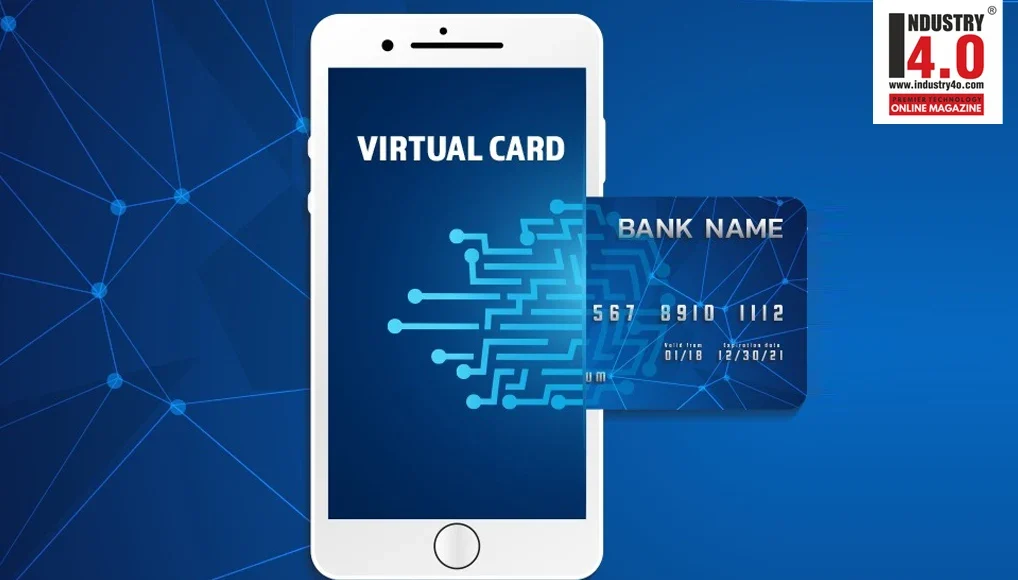From Plastic to Digital: The Rise of Virtual Payment Cards
A virtual payment card is a digital card, non-physical version of a credit or debit card that can be used for online and in-app purchases.
The first virtual payment card was launched in 1995 by Citibank in partnership with the Mastercard network. This product was initially designed to address the growing need for more secure and convenient online payments during the early days of e-commerce.
 The Virtual payment cards market size is expected to reach USD 60.06 billion by 2030, expanding at a CAGR of 20.7% from 2022 to 2030, according to a new study conducted by Grand View Research, Inc. The increasing usage of digital payment platforms is creating the demand for virtual cards worldwide, which is anticipated to drive the growth of the market. In addition, various types of virtual cards offer the consumer a particular set of benefits, such as efficiency and convenience, which also bodes well for the growth of the market.
The Virtual payment cards market size is expected to reach USD 60.06 billion by 2030, expanding at a CAGR of 20.7% from 2022 to 2030, according to a new study conducted by Grand View Research, Inc. The increasing usage of digital payment platforms is creating the demand for virtual cards worldwide, which is anticipated to drive the growth of the market. In addition, various types of virtual cards offer the consumer a particular set of benefits, such as efficiency and convenience, which also bodes well for the growth of the market.
The global payment processing solutions market size is expected to reach USD 98.01 billion by 2027, registering a CAGR of 14.5% from 2020 to 2027, according to a new report by Grand View Research, Inc. The market growth can be attributed to the emergence of digital technology and customers’ demand for immediacy of transactions. The customers are looking for faster and convenient money transfer options, thereby driving the adoption of payment processing solutions.
A new study from Juniper Research has found the number of virtual payment cards transactions will exceed 121 billion globally by 2027; increasing from 28 billion in 2022. This represents growth of 340%. It predicts rising integration of virtual cards to existing digital wallets services, such as Apple Pay and Google Pay, will drive this growth by exploiting existing substantial user bases of these digital wallets.
The research found the global number of virtual payment card transactions through mobile payment methods will grow from 5 billion in 2022 to 53 billion in 2027, as adoption of virtual cards in contactless payments accelerates. It identified the inclusion of virtual cards as a key market driver of consumer adoption of contactless payments in rapidly developing economies, such as India. This allows them to meet market demand for convenient payment options during checkout amongst unbanked populations.
Virtual payment cards face tough competition from other payment methods, such as traditional contactless cards and QR codes. However, the report anticipates that the secure nature of virtual cards will drive demand in an increasingly security-conscious market.
Additionally, the report forecasts that the US will account for $71 billion in B2B virtual payment card revenue by 2027; representing 72% of global revenue!. It predicts that the growing use of virtual cards in the healthcare sector will be key to driving this growth, with virtual cards increasingly used to pay for supplies and equipment due to the speed of transactions and inherent security of this payment method.
The safe ‘swipe’
VPC offer enhanced security features and is often linked to a user’s existing card (Virtual cards are typically linked to a user’s existing credit or debit card), generating a unique card number and other details for each transaction or a set period. They provide a temporary card number, expiration date, and CVV, which are different from the user’s physical card details. This unique information is used for a specific transaction or a set period, adding an extra layer of security against fraud.
When a user initiates a transaction, a unique card number, CVV, and expiration date are generated in form of Virtual Payment Card. User can generate VPC immediately from their bank. This temporary card information is used to complete the online transaction.
The virtual card details may expire after a single use, after a specific time, or when the user chooses to deactivate it. Virtual cards help protect against fraud and data enhanced by using unique, temporary card details for each transaction.
Some virtual card solutions allow users to set spending limits, expiration dates, and other restrictions, giving more control over their spending, which reduces the risk of unauthorized use. It is the safest, easiest, most convenient and secure way of making payments.
Types of VPCs:-
• Single-use VPCs – Automatically expire after one transaction.
• Multi-use VPCs – Can be used for recurring payments but often restricted to specific merchants.
• Prepaid VPCs – Funded in advance and used like a gift card.
So what makes them special?
• No physical card: Environmental Benefits
○ No physical plastic means virtual cards are more eco-friendly.
○ You receive card details (card number, expiration date, CVV) online.
○ Preloaded with funds: You load money onto the card in advance.
○ Reduces plastic waste, especially with short-term or temporary usage.
○ Since there’s no physical card, there’s no risk of misplacement or skimming.
• Enhanced Security and Limited Risk: Useful for limiting spending or protecting primary accounts. Each virtual card has a unique number, reducing the risk of fraud and unauthorized use. Sensitive bank details are never shared with merchants.
![]()
Create a one time Virtual Card number Account info. Not stored Payment Info. Unusable
• Instant Issuance: Often delivered within minutes after purchase.
○ Supports anonymity (in some cases): Basic cards may require little to no personal info (depends on provider and regulations).
○ Control Over Spending: Set spending limits (daily, transaction-based, or overall).
○ Restrict usage to specific merchants or categories.
○ Users can set specific limits, expiry dates, and usage purposes for each virtual card — ideal for managing budgets or one-time purchases.
○ Helps manage subscriptions and expenses
• Convenience and Speed: Can be used immediately after generation.
○ Ideal for online purchases, subscriptions, or booking services.
○ Often integrated into mobile wallets (Apple Pay, Google Pay) for easy in-store use.
○ Perfect for e-commerce, subscriptions, and digital transactions — no need to carry or type physical card details.
• Easy Tracking and Reconciliation– Transactions are automatically recorded and categorized, helping customers track spending and simplify expense management.
• Privacy Protection: Virtual cards reduce how often clients expose their real financial information online.
○ Great for one-time purchases or trying out new merchants.
○ Helps avoid unauthorized charges or being tied to long-term subscriptions.
○ Each virtual card has a unique number, reducing the risk of fraud and unauthorized use. Sensitive bank details are never shared with merchants.
• Global Acceptance– Works across online merchants and international platforms that accept traditional debit or credit cards.
Some Key Players in Virtual Cards Market
- American Express Company
- BTRS Holdings, Inc.
- Wise Payments Limited
- JPMorgan Chase & Co.
- Marqeta, Inc.
- Mastercard
- Skrill USA, Inc.
- Stripe, Inc.
- WEX, Inc.
- Adye
- Axis Bank
- Niche players like – Privacy.com, Airbase, Soldo, Divvy (Bill.com) etc.
Summary
1. Card Information
• Card Number: A unique card number that can be used for online transactions. Expiration Date: Just like a physical card, virtual cards come with an expiration date.
• CVV: A security code used to confirm the authenticity of the card when making payments. Issuer: The financial institution or service provider that issued the virtual card.
2. Transaction History
• Date: When the transaction occurred. Merchant Name: The business or platform where the payment was made.
• Amount: The cost of the transaction. Status: Whether the transaction is pending, completed, or refunded. Payment Type: Whether it’s a one-time charge, subscription, etc.
3. Card Limits and Usage
• Spending Limit: The maximum amount that can be charged to the card, which may be set by the user or the issuer. Balance: Remaining available balance on the virtual card.
• Expiry and Renewal: If the virtual card has a limited lifespan, when it will expire and whether a new card will automatically be issued.
4. Security Features
• Virtual Card Restrictions: Some cards may allow you to set restrictions on where and how they can be used (e.g., for specific merchants, countries, or types of transactions).
• Real-Time Notifications: Many virtual card providers send notifications after every transaction, enhancing security and providing a summary of spending.
5. Payment Summary
• Total Spend: A breakdown of all transactions made with the virtual card during a given period (daily, weekly, monthly). Refunds or Adjustments: Any refunds or charges that were reversed.
• Category Breakdown: Sometimes, virtual cards will categorize your spending (e.g., “Entertainment,” “Food,” “Subscriptions”).
6. Access and Management
• Card Management: You can typically pause, lock, or close virtual cards from the payment provider’s app or website.
• Recharging: Some virtual cards allow you to add funds to the card from a linked bank account.
About the Author :
 Mr. Avirup Bhattacharya,
Mr. Avirup Bhattacharya,
Senior Banking Industry Consultant – IBM
Mr. Avirup Bhattacharya is seasoned Senior Banking Industry Consultant with 13 years of experience in helping banks and financial institutions in improving Core Banking systems as well as improve customer experience and engagement through the implementation of Digital Banking.
Mr. Avirup Bhattacharya is analysing and redefining Core banking solution, products, services and systems.
Mr. Avirup Bhattacharya is Bestowed with the following Licences & Certifications :
https://www.linkedin.com/in/avirup-bhattacharya-9a107016/details/certifications/
Mr. Avirup Bhattacharya can be contacted at :












